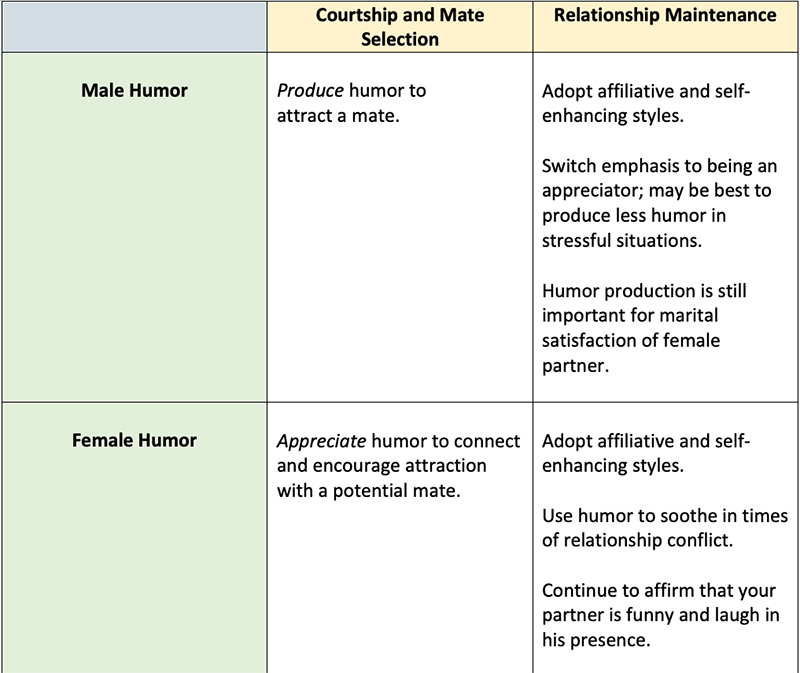
Why Women Are Bored in Monogamous Relationships
“Between two evils, I always pick the one I never tried before.” ~ Mae West
In my last post, (Turn Off the Brakes! Making the Most of Responsive Desire), I shared the advice Emily Nagoski gives to couples to improve their sex life. Nagoski and other sex educators describe the dominant mode of women’s sexuality as “responsive.” Women need sufficient sexual stimuli and an appropriate context to move from a place of neutrality to being aroused and desirous of a sexual connection. Nagoski recommends that couples raise their heart rate together or go deeper emotionally to trigger desire instead of creating novelty through new sex toys and techniques. That is good advice. But make no mistake, women need more novelty than men in an ongoing sexual relationship. Men have a lower threshold for sexual motivation and stimulation, and their orgasms are more predictable. Women need more varied stimulation than men, and their orgasms are definitely not assured.
In fact, there is an emerging trend related to female sexuality in an ongoing relationship. As the headline from an Atlantic article succinctly put it, women are “The Bored Sex.”
“Female sexual boredom could almost pass for the new beige.” ~Wednesday Martin (Atlantic)
Variety and Novelty – Sex Differences
Men are neurologically built to desire a variety of partners, more so than women. Women are built to need and want more variety of stimulation (physical and emotional) from one man over time for sexual fulfillment. In a monogamous pair bond, it is the woman, more often than the man, who will need more diverse stimuli and breaks from routine in order to be aroused and orgasmic.
Mating Science Background
Men want a variety of partners as dictated by the foundational predominance of a short-term sexual mating strategy. (See “Coolidge Effect” in Appendix.) Women prefer a specific singular partner as dictated by their predominant long-term sexual strategy and need for parental investment. Alfred Kinsey: “There seems to be no question but that the human male would be promiscuous in his choice of sexual partners throughout the whole of his life if there were no social restrictions. The human female is much less interested in a variety of partners.”
Spontaneous vs. Responsive Desire – Accelerator and Brake
Men (in aggregate) need less variety and novelty in an ongoing sexual relationship than women do because of their predominant “spontaneous” sexual response and a sex drive that accelerates with pursuit.
Women (in aggregate) need more novelty and variety in an ongoing relationship because of the fragility and complexity of their predominant “responsive” desire mechanism that often “brakes” out of caution. (See Appendix for “Out-of-Sight-Out-of-Mind Responsive Desire” and “Supply and Demand Influences on Responsive Desire.”)
It’s Not the Sex She Wants
Manhattan psychiatrist, Andrew Gotzis, was treating a straight couple in their 40s; they had been together close to 20 years. They reportedly had sex three times a week. (Quite above the normal for a couple in a relationship of that duration.) The woman had orgasms but was still dissatisfied. As Gotzis described the situation, “The problem is not that they are functionally unable to have sex or to have orgasms. Or frequency. It’s that the sex they’re having isn’t what she wants.” The woman wants to be wanted by her partner in that “can’t-get-enough-of-each-other-way that experts call “limerence” – the initial period of a relationship when it’s all new and hot.
Habituation to Stimulus
This woman may be an idealist, unrealistic, selfish, or entitled. But her sexual struggles in a long-term relationship, orgasms, and frequency of sex notwithstanding, make her normal. Although most people in a sexual partnership end up facing the conundrum biologists call “habituation to stimulus” over time, a growing body of research suggests that heterosexual women are likely to face this problem earlier in a relationship than men. Men seem to manage wanting what they already have, while women struggle with it.
Don’t Move In With Your Boyfriend
In a study of 11,500 British adults aged 16-74, women were more likely to lose interest in sex after one year of cohabitation. Newsweek (2017) reported this study and others with the cautionary title addressed to women: “Moving in with Your Boyfriend Can Kill Your Sex Drive.” “Women living with a partner were more likely to lack an interest in sex than those in other relationship categories.”
A 2012 study (Journal of Sex Marital Therapy) of 170 men and women aged 18-25 found that women’s desire, not men’s, was negatively affected by relationship duration after controlling for age, relationship satisfaction, and sexual satisfaction.
Female Desire Tanked in Germany and Finland
Two German longitudinal studies, published in 2002 and 2006, showed female desire dropped dramatically after 90 months while male desire held relatively steady. Women who did not live with their partners seemed to avoid the “effects of overfamiliarity.”
And a seven-year Finnish study (2016) of more than 2,100 women by Annika Gunst found that women’s sexual desire varied depending upon relationship status. Those in the same relationship reported less desire, arousal, and satisfaction.
Wanting Monogamy and Having Desire Are Different
Many, if not most women, want monogamy. But as Wednesday Martin wrote for the Atlantic, “wanting monogamy isn’t the same as feeling desire in a long-term monogamous partnership.”
Women’s Lower Baseline Libido
There is evidence that women have a lower baseline libido as measured by the frequency of sexual thoughts, fantasies, masturbation, and desire for sexual activity. Psychiatrist and sexual health practitioner Elisabeth Gordon reported that women disproportionately presented with a lower sexual desire than their male partners after a year or more and in the longer term. (See “Sex Drive Defined” in Appendix.)
Just Not the Same Sex Over and Over
However, Gordon says women “regularly start relationships equally excited for sex.” As Martin puts it, “women in long-term, committed heterosexual partnerships might think they’ve gone off sex – but it’s more that they’ve gone off the same sex with the same person over and over.
“When couples want to remain in a monogamous relationship, a key component of treatment is to help couples add novelty,” Gordon advised. (Women are the primary consumers of sex-related technology, lubricants, and of course, lingerie.)
Long-term Relationships Are Rough On Female Desire
Author and sex researcher Marta Meana says, “long-term relationships are rough on desire, especially female desire.” Meana and colleague Karen Sims conducted a qualitative study on 19 married women (Journal of Sexual Martial therapy) and found that most women were pleased with their partners – just not their sex lives. Three interrelated reasons emerged to explain participants’ loss of libido.
Three Reasons for Female Libido Loss
While female sexuality generally prefers emotional connection and familiarity to thrive, Meana discovered that institutionalization of the relationship, overfamiliarity, and de-sexualization of roles in a long-term heterosexual partnership could mess with female passion.
1. Institutionalization
For many of the women studied by Meana and Sims, marital sex was a snooze. They were simply bored with the routine of ever-available marital sex. As described by Kaye Smith in Married Women Talk About Why They Don’t Want Sex, “bed-breaking premarital sex can dwindle to Saturday morning missionary-only encounters hurriedly sandwiched between Junior’s soccer game and Fluffy’s deworming.” It is too sanitized and socially sanctioned. And obligation to have sex is a guaranteed buzzkill. If you are expected to make your partner sexually happy, it is a turn-off.
2. Familiarity Breeds Contempt
The second issue that the women complained about was over-familiarity. It was the romance of early love, the pre-relationship dating days with all its novelty, anticipation, and uncertainty that they longed for the most. “Familiarity breeds contempt” is never more true than in the bedroom. Another buzzkill is doing the same thing, the same way, every time. One woman in the Meana study said: “When you are married, you know exactly how your husband is going to touch you. There is a comfort with each other, but it’s not as exciting . . . the desire is lost.” Many women talked about how they could predict what their husbands would do next and in what order.
“You Just Gotta Stop”
As one exasperated 33-year old woman told her husband: “things like grabbing me and touching me would really get me excited (in the past). But doing the same things now completely turn me off. “You cannot just grab my breast like that anymore – it no longer turns me on – you just gotta stop.”
If you know what will happen next, your brain (and other body parts) say “why bother?” Desire is fueled by the neurotransmitter dopamine, which rises in response to novelty and anticipation.
3. De-sexualization of Roles and Maternal Sensory Overload
Most of the women spoke of being absolutely depleted by their to-do list. And sex did not have priority on that list. (This is evidence of responsive desire). Also, many felt there was an incompatibility between the role of mom and the role of “vixen.” Interestingly, for mothers of small children, the constant tactile demands of caring for a child left them feeling “over-touched” – on sensory overload – and not in the mood for more skin contact.
Paradox and Complexity of Female Desire
Female sexual response is fragile and complex with opposing or paradoxical elements active, side-by-side, at any given moment. Female desire is enhanced by arousing ambivalence but in a manageable way. Too much ambivalence, and you are left to feel too anxious; too little, and you are bored.
Women Want to Be Wanted More than Anything Else
Smith says women are socialized to romanticize sex. Women want to be wanted – often more than anything else. Women fantasize about being the object of a hot stud’s desire (ala Fifty Shades of Grey). But, in being the object, women paradoxically assume power. The rape fantasy is all about being desired; it is NOT about being defeated or abused.
What Can Be Done to Turn Women On?
Certainly, socializing women to be passive in the bedroom doesn’t work and leads to sexual disappointment and boredom. There is still an education problem. Women are not told about their anatomy; they masturbate less than men and often have sex based on what works for men. (According to research, only 29% of women always have an orgasm during sexual intercourse, in comparison to 75% of men.)
Life-Long Hot Sex is Not Realistic
The idea that life-long love means nonstop hot sex is probably not realistic either. (Nor does it comport with biological imperatives and hormonal shifts in long-term relationships, especially relationships with children.) Smith suggests, “if we could just lighten up about sex – see it as adult play perhaps – we would be better off.”
Mating in Captivity – the Polarity of Female Desire
Esther Perel (Mating In Captivity) brilliantly explains the polarities animating human sexual desire, especially for women. “Desire is fueled by the unknown, and for that reason, it’s inherently anxiety-producing. Eroticism resides in the ambiguous space between anxiety and fascination. Without an element of uncertainty, there is no longing, no anticipation, no fission.”
Fundamental Needs Seeking Reconciliation
Two fundamental human needs seek reconciliation. On the one hand, we need security, predictability, safety, and dependability. We require reliability and permanence; all of these are anchoring, grounding experiences in our lives. This anchoring is especially necessary for women as predicted by evolutionary science and a woman’s mating strategy designed to protect children.
But we have an equally strong need for adventure, novelty, mystery, and risk. We are stimulated by a little “danger,” the unknown, the unexpected. Surprise turns us on. Taking a “journey” together (actual travel) is often good for our sex lives.
From Passionate to Intentional Sexuality
“Erotic couples know how to manage the transition from passionate sexuality to intentional sexuality,” says Perel. “They understand that it not only takes work but also creativity – like when you want a beautiful meal rather than just a quick bite.” Emilly Nagoski describes “context appointments” and “windows of willingness.” (See Turn Off the Brakes! Making the Most of Responsive Desire). She often tells women: “You don’t have to be horny first. You don’t have to crave sex before you start having sex. You just have to be willing to try some intimate contact with pleasure as the only goal.”
Remain Curious, My Friend
Sexual boredom can only happen when you are no longer curious, says author Jack Morin (The Erotic Mind: Unlocking the Inner Sources of Passion and Fulfillment). So, here’s to continued curiosity about the enigma and beauty of female desire. I will never get bored with that.
My Next Post
My next post will continue the theme of female sexual boredom and dissatisfaction by explaining the problems of 1) “sex-is-intercourse,” 2) “clitphobia,” 3) sexual “lockjaw,” 4) the orgasm gap, and 5) “male sex deficit.” Stayed tuned for that!
References
Sims, K. & Meana, M.; “Why did passion wane? A qualitative study of married women’s attributions for declines in sexual desire.” Journal of Sex Marital Therapy; 2010, 36 (4) 360-380.
Murray, S. & Milhausen, R.; “Sexual desire and relationship duration in young men and women.” Journal of Sex Marital Therapy. 2012; 38 (1) 28-40.
Appendix
The “Coolidge Effect”
The story is told that President Coolidge and the first lady were given separate tours of newly formed government farms. Upon passing the chicken coops and noticing a rooster copulating with a hen, Mrs. Coolidge inquired about how often the rooster performed this duty. “Dozens of times each day,” replied the guide. Mrs. Coolidge asked the guide to “please mention this fact to the president.” When the president passed by later and was informed of the sexual vigor of the rooster, he asked, “always with the same hen?” “Oh no,” the guide replied, “a different one each time.” “Please tell that to Mrs. Coolidge,” said the president.
And so the Coolidge Effect was named, referring to the tendency of males to be sexually re-aroused upon the presentation of novel females, giving them a further impulse to gain sexual access to multiple women. The Coolidge Effect is a widespread mammalian trait that has been documented many times. Male rats, rams, cattle, and sheep all show the effect. Men across cultures show the Coolidge Effect.
Sex Drive Defined
Sex drive is commonly defined as the frequency of sexual thoughts, frequency of masturbation, interest in sexual activity with another person, frequency of intercourse in a specified period, desire for multiple sex partners, habits of pornography use, response to erotic images in everyday life, and frequency and nature of sexual fantasies.
Sex is not really a drive, according to Emily Nagoski (Come As You Are, 2015), because it is not necessary for personal survival. She calls it an “incentive motivation system.” But calling sexual desire a motivation system and not a drive (which takes away the pejorative label of dysfunction for women) does not change the fact that men think about and have the urge to engage in sexual behavior (all components above) more than women, primarily because of greater levels of testosterone and the accompanying power of their predominant short-term mating strategy.
Out-of-Sight-Out-of-Mind Responsive Desire
Female “responsive” desire must be “woken up” by direct, in-coming stimulation. Women have a greater capacity than men to experience out-of-sight-out-of-mind concerning their sexual desire, partly because of the differences in visual sexual triggers.
Related to “out-of-mind,” women may not be dramatically bothered by their desire loss. That “meta-emotion” (feeling about a feeling) might depend upon the degree of parental energy expended by the woman and the degree to which her safety and security needs are met.
Supply and Demand Influences on Responsive Desire
Sex for most women is an abundant resource; it is not in short supply. It is a need (within the confines of self-imposed selective preferences) that can almost always be met. Therefore, there is no need to attend to it. Out-of-sight, out-of-mind makes sense. If the refrigerator is full, there is no need to fantasize or strategize about how to get food. If there is a man “pulling up” (like a bus) every five minutes, there is no need to worry about missing or choosing not to take the last bus.
Please Note: Your comment may take up to 12 seconds to register and the confirmation message will appear above the “Submit a Comment” text.





